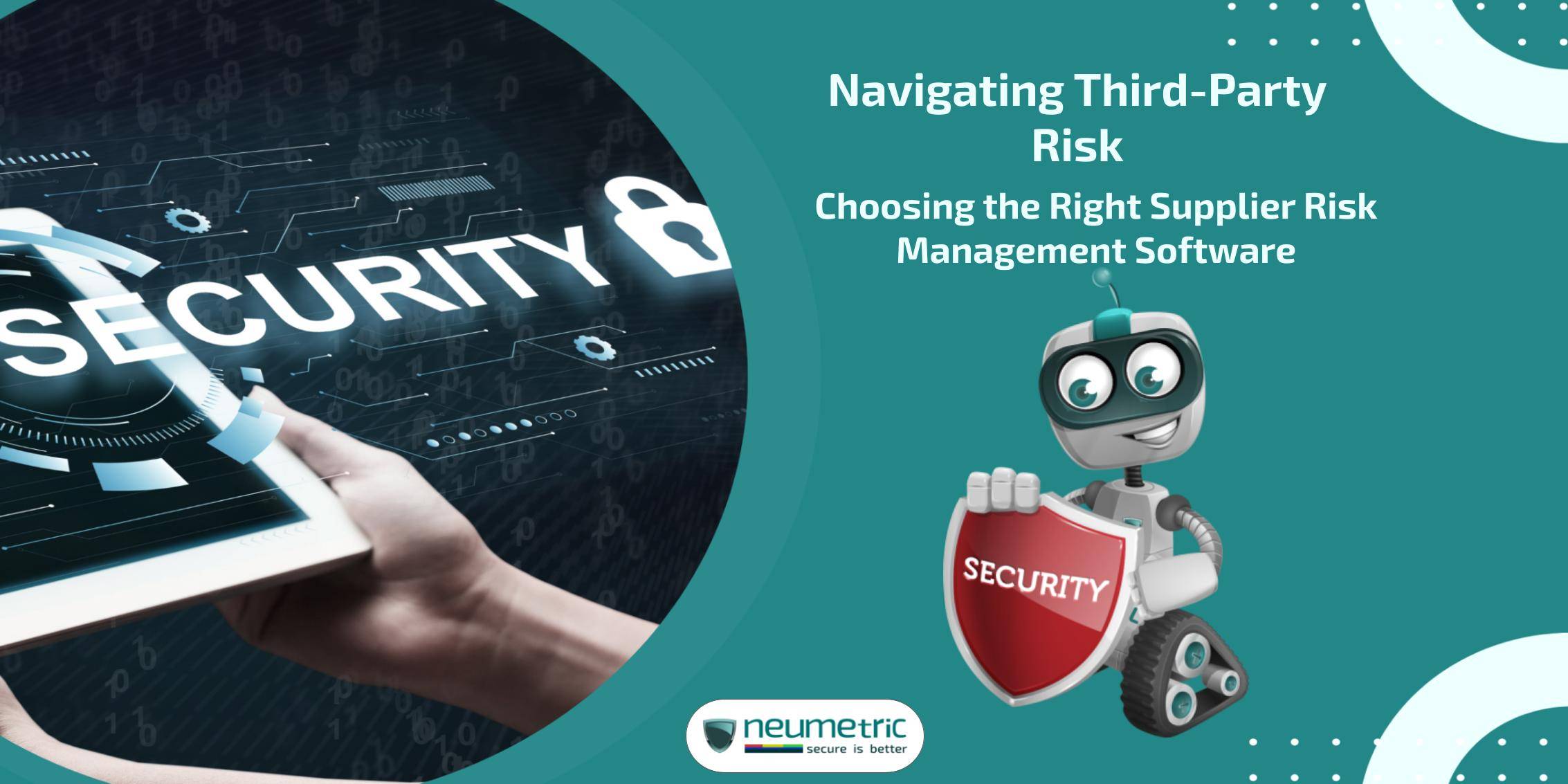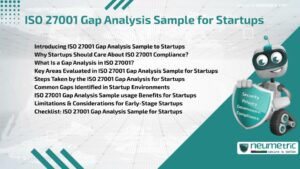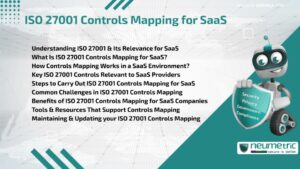Table of Contents
ToggleIntroduction
Third-party risk in the modern business landscape refers to the possible dangers & vulnerabilities that might come from an organisation’s interactions & dependencies with external entities. These companies, which are frequently suppliers, vendors or service providers, add a level of uncertainty into a corporation that can affect everything from financial stability to operational continuity & reputation.
The importance of efficient supplier risk management has expanded tremendously with the rising complexity & interconnection of global supply chains. Businesses are no longer separate entities, but rather part of complex networks in which disruptions in one node can have far-reaching consequences. The increased reliance on external partners needs a systematic & comprehensive approach to mitigating potential risks & ensuring the overall business ecosystem’s resilience.
Recognising the limitations of human risk management methods, businesses are turning to innovative software solutions to expedite & improve their third-party risk mitigation tactics. Software enables organisations to proactively discover, assess & handle possible hazards through automation, real-time monitoring & data analytics. This technological intervention not only enhances the efficiency of risk management operations, but it also provides a more accurate & timely understanding of the risk landscape as it evolves.
The major goal of this Journal is to provide a thorough examination of the dynamics surrounding third-party risk management, with a particular emphasis on selecting the best supplier risk management software. This Journal seeks to provide organisations with the knowledge they need by delving into the nuances of third-party risks & highlighting the critical role of software solutions.
Understanding Third-Party Risk
Third-party risks encompass a spectrum of potential threats that can emanate from external partnerships. These risks can be categorised into three main types:
Financial Risks: These involve uncertainties related to monetary aspects, such as payment defaults, currency fluctuations or economic downturns affecting the financial health of the involved third party.
Operational Risks: Operational disruptions may occur due to external factors, including supply chain interruptions, logistical challenges or failures to meet quality & performance standards.
Reputational Risks: The actions or failures of third parties can impact the reputation of a business. Reputational risks involve damage to the brand image, loss of customer trust & potential long-term negative effects on the business’s standing.
The ramifications of uncontrolled third-party risks are numerous & can have a significant impact on enterprises. Businesses may suffer financial losses as a result of payment defaults or economic downturns affecting external partners. Disruptions in operations can cause delays in production or service delivery. Third-party reputational damage can have long-term consequences for brand image, customer relationships & overall market status. As a result, organisations must have a thorough grasp of these risks in order to adopt effective risk management strategies & maintain the resilience of their operations in an interconnected business environment.
The Need for Supplier Risk Management Software
Traditional Approaches to Third-Party Risk Management: Manual processes, such as spreadsheets, emails & periodic assessments, are common in traditional approaches to third-party risk management. While these approaches were adequate in the past, the dynamic & interconnected nature of today’s business ecosystems needs more innovative & effective solutions.
Manual System Limitations: Manual third-party risk management solutions have inherent limitations. They take time, are prone to errors, lack real-time capabilities & may struggle to deal with the complexity of developing risk landscapes. The inefficiencies of manual systems become more obvious as the number of third-party contacts grows, making it difficult for organisations to keep up with the speed & scale of modern operations.
Benefits of Implementing Software Solutions
Risk Assessment Automation: Supplier risk management software automates the risk detection & assessment procedure. This saves time while also ensuring a more consistent & complete review of potential threats. Businesses can respond quickly to emerging risks & weaknesses thanks to automated risk assessments.
Real-time Monitoring & Alerts: One of the key benefits of software solutions is the ability to monitor third-party activity in real-time. When possible dangers are recognised, automated warnings can notify stakeholders instantly, allowing for quick action & mitigation steps. This proactive strategy improves a company’s ability to handle issues before they become major problems.
Data Centralisation & Accessibility: Supplier risk management software centralises data related to third-party relationships. This centralised repository ensures that all relevant information is easily accessible, fostering better decision-making. Additionally, stakeholders across different departments can access the information they need, promoting collaboration & transparency.
Key features to look for in Supplier Risk Management Software
Risk measures that can be tailored: Effective software should enable organisations to adjust risk measures to their specific industry, compliance requirements & individual risk appetite. Customization ensures that the software is aligned with the business’s specific risk profile.
Scalability for various business sizes: The software should be scalable in order to serve enterprises of various sizes. The supplier risk management system should be adaptive to the volume & complexity of the organisation’s activities, whether it is a small business or a major corporation.
Real-time monitoring tools: The ability to monitor third-party activities in real-time is critical. This feature enables businesses to stay vigilant & responsive to emerging risks, preventing potential disruptions before they impact operations.
Comprehensive reporting capabilities: Supplier risk management software should offer robust reporting capabilities. Customizable reports allow businesses to analyse data, track trends & generate insights that contribute to informed decision-making. Reports can also facilitate compliance reporting & audits.
Compatibility with ERP systems: Integration with existing Enterprise Resource Planning [ERP] systems is critical for seamless data flow between different company activities. This compatibility guarantees that supplier risk data is synchronised with other corporate data, offering a comprehensive view of risk across the firm.
Data synchronisation with other platforms: Effective supplier risk management software should link with other relevant platforms, such as Customer Relationship Management [CRM] tools or procurement systems, in addition to ERP systems. This integration improves process efficiency & eliminates data silos, resulting in a more integrated & efficient risk management environment.
Intuitive dashboard design: Designing an intuitive & user-friendly dashboard is critical for user uptake. The software interface should be developed with clarity & simplicity in mind, allowing users to simply navigate & retrieve the information they require without undue complexity.
Training & support services: Comprehensive training & support services should be offered to realise the benefits of supplier risk management software. This guarantees that all users, from frontline staff to management, are competent in using the software. Ongoing support assists with the resolution of any issues or questions that may emerge during implementation & everyday use.
Common Challenges in Implementing Supplier Risk Management Software
Resistance to Change: One of the most difficult difficulties in deploying supplier risk management software is corporate culture reluctance to change. Employees who are accustomed to old processes & tools may be wary about adopting new technologies. This opposition may be motivated by a fear of the unknown, concerns about increased workload during the transition or a misunderstanding of the benefits that the new program provides. To address this difficulty, effective change management tactics are required, such as clear communication about the benefits of the software, training programs to increase competency & including staff in decision-making to foster a sense of ownership.
Data Security Concerns: The handling & storage of sensitive company data is required while using supplier risk management software. Concerns about data security, such as the possibility of breaches or illegal access, can be a substantial obstacle to adoption. Organisations must emphasise effective cybersecurity solutions to alleviate these worries. Encryption mechanisms, safe access restrictions, regular audits & compliance with industry-specific data protection standards are all part of this. Transparently communicating these security procedures to stakeholders can establish trust in the system’s ability to protect sensitive information.
Integration Issues with Existing Processes: Integrating new software with old processes can be difficult, especially when dealing with diverse & complicated systems. Misalignment between the supplier risk management software & other tools or platforms might result in data inconsistencies, workflow disruptions & reduced efficiency. Thorough planning & evaluation of existing processes are required to overcome integration difficulties. Customization possibilities inside the program, as well as a flexible approach to integration, aid in ensuring a seamless alignment with the organisation’s specific requirements.
Overcoming Employee Pushback: Employee resistance, motivated by worries about work roles, perceived difficulties or a perceived lack of advantages, might stymie successful implementation. To overcome this obstacle, firms must stress the software’s positive influence on everyday chores, job functions & general efficiency. Employees’ fears can be alleviated by involving them in the implementation process, soliciting their comments & offering continuous assistance. Employee cynicism can be converted into active engagement by demonstrating actual gains in workflow, time savings & the capacity to make more informed decisions using the program.
Selecting the Right Supplier Risk Management Software
Before embarking on the selection of supplier risk management software, businesses must conduct a comprehensive needs assessment. This involves a thorough understanding of the organisation’s structure, operational processes & specific requirements concerning third-party relationships. Key considerations include the complexity of the supply chain, the types of risks the business is exposed to & the level of integration required with existing systems.
Key Considerations in the Decision-Making Process
Budget considerations: It is critical to create a detailed budget. Companies must weigh the costs of software procurement, implementation & continuing maintenance against the expected benefits. While cost-effectiveness must be considered, it is also critical to realise the long-term value that a sophisticated supplier risk management solution can provide to the company.
Customization & scalability: The software chosen should be adaptable to the specific needs & risk profiles of the organisation. Furthermore, scalability is critical to accommodate prospective expansion & changes in the supply chain’s complexity. The software’s ability to adapt to changing business requirements is critical for long-term success.
Vendor Reputation & Support: It is critical to evaluate the software vendor’s reputation. A provider with a track record of providing dependable & effective solutions is more likely to deliver on time. Furthermore, responsive & professional customer service is crucial for resolving difficulties quickly & guaranteeing a seamless deployment & continuous usage.
Regulatory Compliance: Supplier risk management software must comply with industry-specific rules & compliance standards. Ensuring that the software chosen conforms with relevant regulatory frameworks protects the firm from legal issues & strengthens the reliability of the risk management operations.
Best Practices for Implementing Supplier Risk Management Software
Developing a Comprehensive Implementation Plan: Create a clear implementation plan including the deployment’s goals, objectives & milestones. This strategy should include a tiered approach, roles, dates & consideration of potential challenges. A well-structured plan manages expectations, mitigates risks & guarantees a smooth transition without interfering with continuing operations.
Training & Communication Strategies: Comprehensive training programs are required to equip users with the information & skills needed to use supplier risk management software effectively. Customise training sessions for various jobs within the organisation, stressing how the software fits into their individual tasks. A positive attitude toward change & user adoption is fostered by clear communication regarding the benefits of the program, the reasons for its installation & the support mechanisms in place.
Continuous Monitoring & Evaluation: Implementing supplier risk management software is an ongoing process that requires continuous monitoring & evaluation. Regular assessments help identify areas for improvement, ensure the software aligns with evolving business needs & captures emerging risks. Feedback from users & stakeholders is invaluable for refining processes, addressing any challenges & optimising the software’s performance over time.
Data Migration & Integration: Ensure a smooth transition by carefully planning the migration of data from existing systems to the new software. Integration with other relevant platforms, such as Enterprise Resource Planning [ERP] systems & procurement tools, is crucial for maintaining data consistency & facilitating seamless communication between different business functions.
Conclusion
In today’s complex business landscape, the need for supplier risk management cannot be emphasised. Organisations are becoming more interconnected as they rely on a network of external partners & suppliers. The costs of failing to consider third-party risks go beyond financial consequences, affecting operational continuity & brand perception. Supplier risk management has emerged as a strategic priority for mitigating potential disruptions & guaranteeing the overall stability & sustainability of the business environment.
The importance of software in complementing third-party risk mitigation initiatives has been highlighted in this Journal. Traditional procedures, which are sometimes laborious & time-consuming, fall short of dealing with the changing nature of modern business hazards. Supplier risk management software enables firms to proactively discover, assess & respond to risks through automation, real-time monitoring & data-driven insights. The software acts as a multiplier, improving the precision & effectiveness of risk management techniques & increasing corporate resilience in the face of an ever-changing panorama of potential threats.
As companies traverse the intricacies of global supply chains & interdependent partnerships, the need for proactive supplier risk management software is more pressing than ever. The advantages go beyond risk reduction to include improved decision-making, increased operational efficiency & increased organisational competitiveness. Businesses that invest in modern software solutions tailored to their needs not only weather uncertainty, but also thrive in an environment where resilience & agility are required for success.
FAQ’s
Why is supplier risk management important for businesses?
Supplier risk management is crucial for businesses to identify & mitigate potential disruptions, safeguard financial stability & protect their reputation in an interconnected global business environment.
What are the key features to look for in supplier risk management software?
Look for customizable risk metrics, scalability for different business sizes, real-time monitoring tools, comprehensive reporting capabilities & seamless integration with existing systems.
How can businesses overcome resistance to implementing new software?
Overcoming resistance involves clear communication about the benefits, comprehensive training programs, involving employees in the decision-making process & addressing concerns to ensure a smooth transition.





